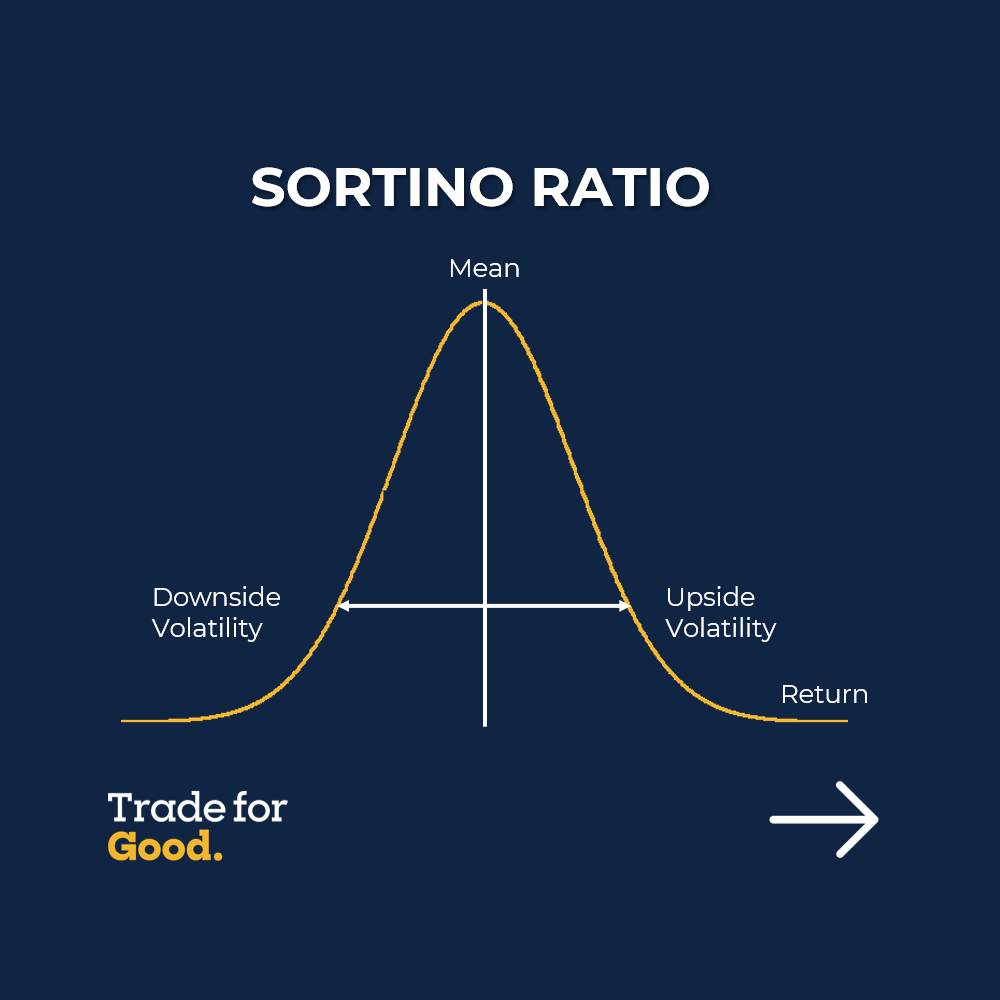
What Is the Sortino Ratio?
The Sortino ratio, a variation of the Sharpe ratio, distinguishes harmful volatility from overall volatility, it does this by using the standard deviation of negative portfolio returns downside deviation.
Instead of total portfolio return standard deviation, it calculates an asset or portfolio’s return minus the risk-free rate, and then divides this amount by the asset’s downside deviation.
This ratio was named after Frank A. Sortino.

KEY TAKEAWAYS
- The Sortino ratio differs from the Sharpe ratio by considering only the downside risk’s standard deviation, not the total risk.
- Focusing on negative deviations from the mean, the Sortino ratio offers a clearer view of risk-adjusted performance, as positive volatility is beneficial.
- It helps investors, analysts, and portfolio managers evaluate an investment’s return relative to its downside risk.

What the Sortino Ratio Reveals
The Sortino ratio helps investors, analysts, and portfolio managers evaluate an investment’s return relative to its downside risk. By using only downside deviation as the risk measure, it avoids the issue of considering total risk, including upside volatility, which benefits investors and is generally not a concern. This makes the Sortino ratio a more precise tool for assessing risk-adjusted performance.

The Difference Between the Sortino Ratio and the Sharpe Ratio
The Sortino ratio refines the Sharpe ratio by isolating downside or negative volatility from total volatility, dividing excess return by downside deviation instead of total standard deviation.
While the Sharpe ratio penalizes investments for good risk, which yields positive returns, the Sortino ratio avoids this issue.

Choosing between the two depends on whether the investor wants to consider total standard deviation or focus solely on downside deviation.

Benefits
More Relevant Risk Measure: By focusing on downside risk, it provides a more focused measure of risk-adjusted performance.
Improved Performance Insight: Helps in evaluating how well an investment compensates for the risk of negative returns.
 Limitations
Limitations
Incomplete Risk Profile: By ignoring upside volatility, it might overlook some aspects of an investment’s risk.
Sensitivity to Assumptions: Heavily dependent on the accuracy of downside deviation and the chosen risk-free rate.

Practical Usage
Investment Comparison: Useful for comparing investments with different risk profiles, especially those with significant downside risks.
Risk Management: Helps in managing portfolios by providing insights into the risk of negative returns

The Bottom Line
The Sortino ratio is a valuable tool for investors to assess the risk-adjusted return of their investments, focusing specifically on downside risk. Isolating negative volatility provides a clearer and more relevant performance measure for those primarily concerned with minimizing losses.

You can download the offline guide here Sortino Risk-Return Ratio

What you learn here has been used in our Trade for Good software.
Click on the button to find our software education videos.
You can read more of our educational articles in the Trade for Good Learn section
Trade for Good Learn


